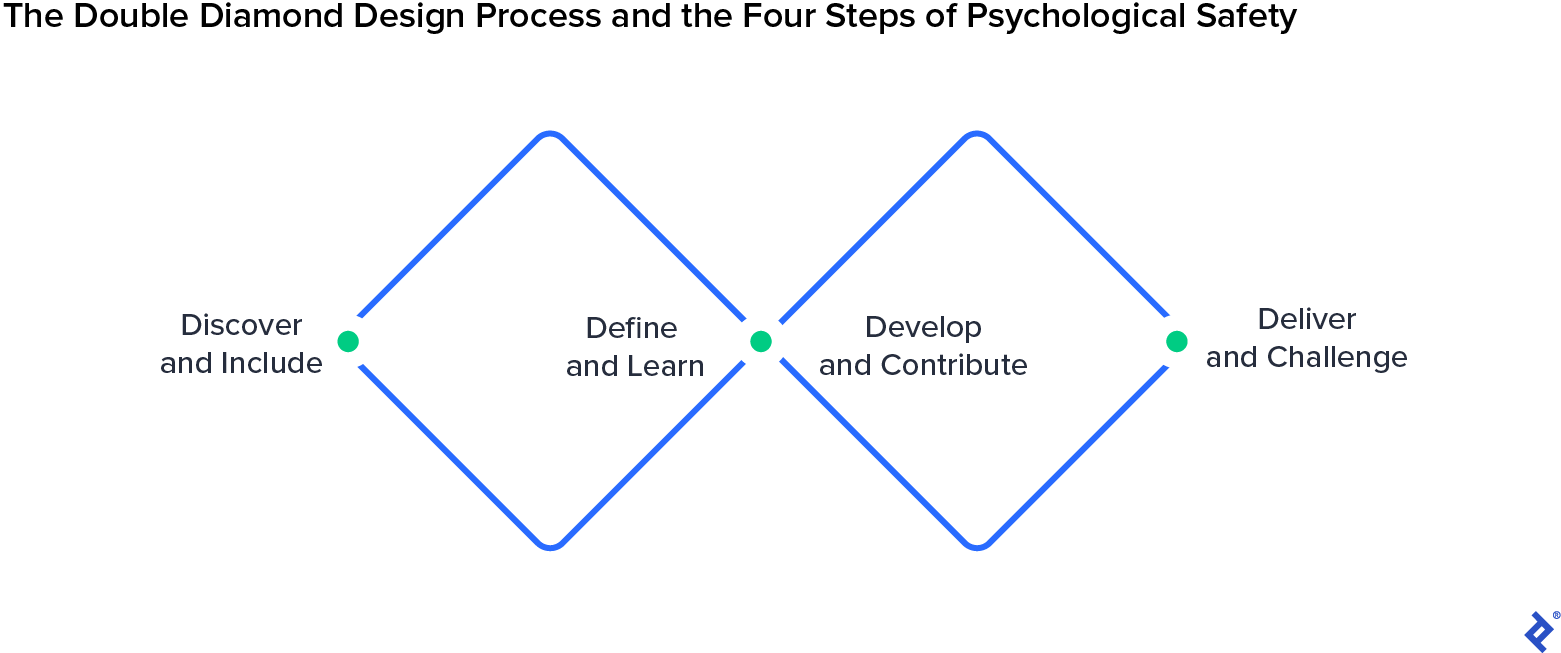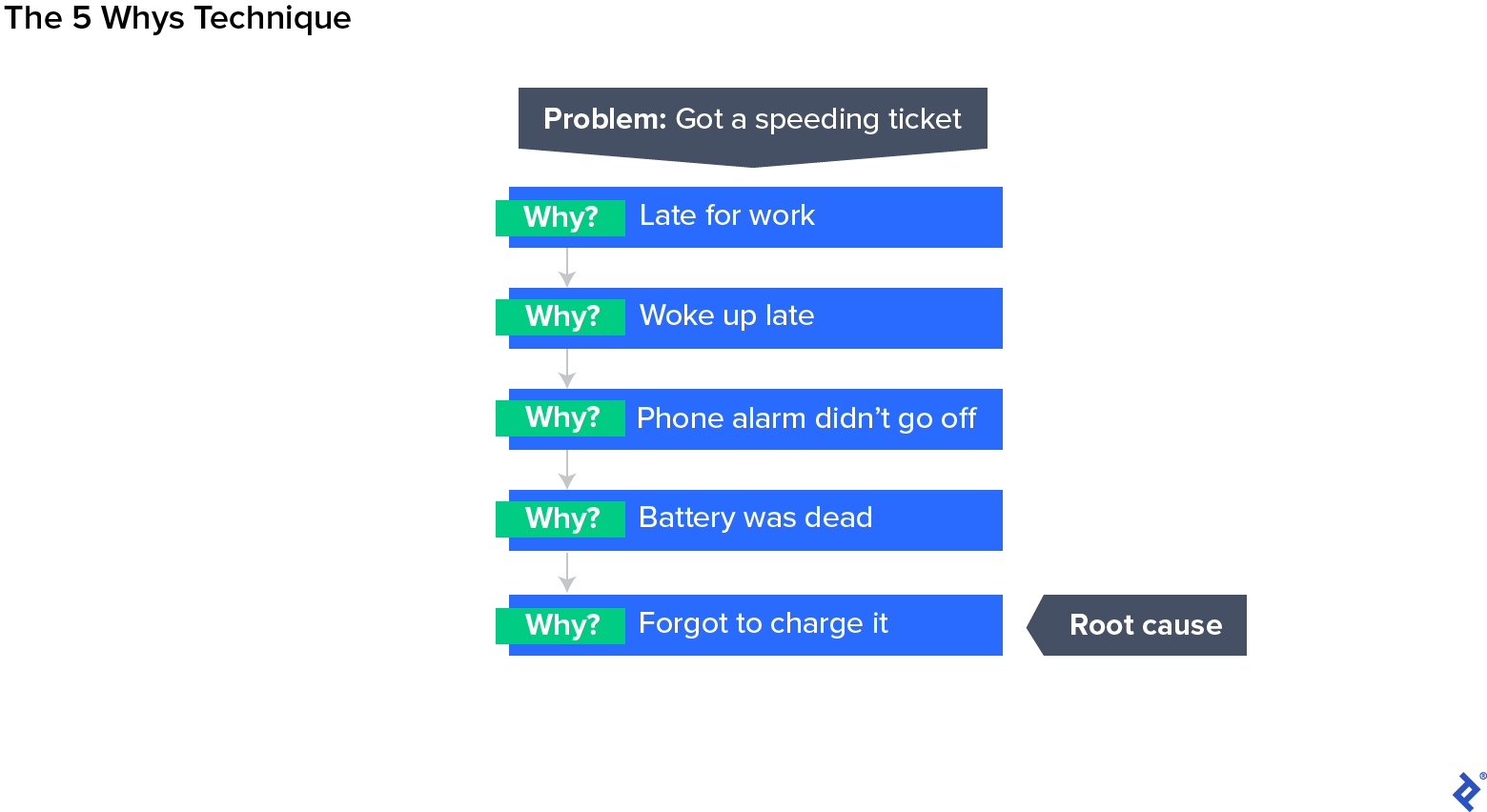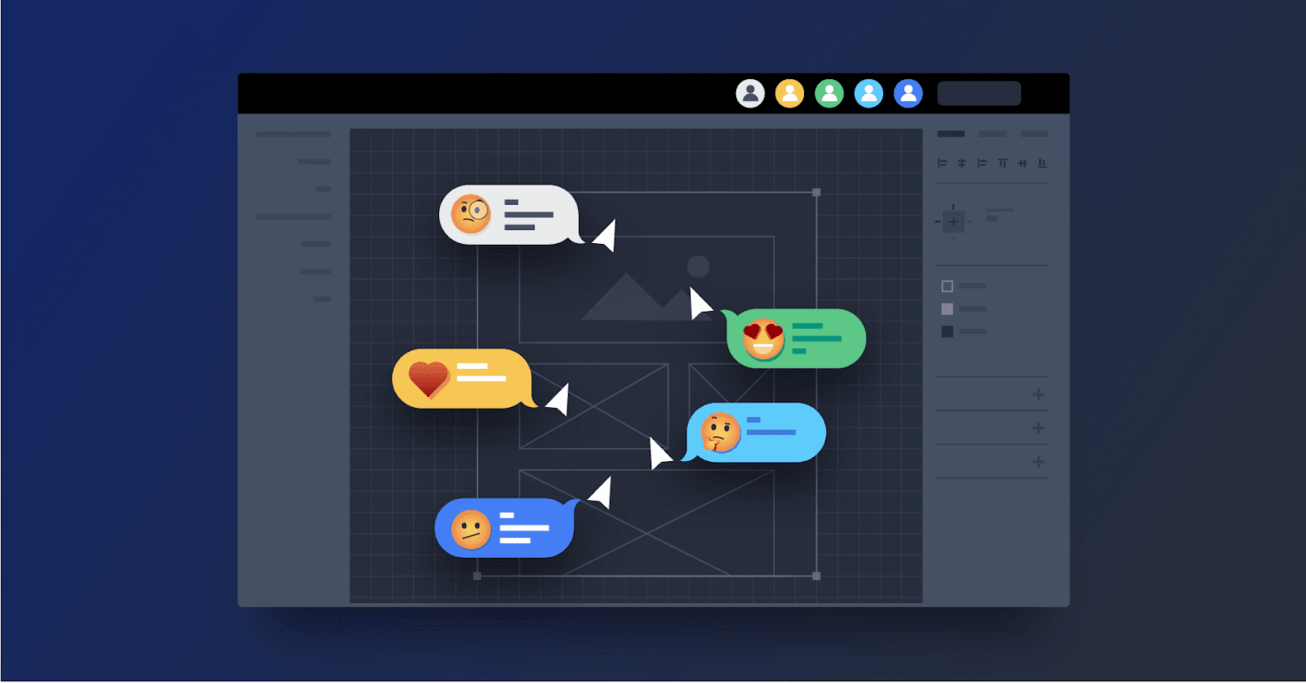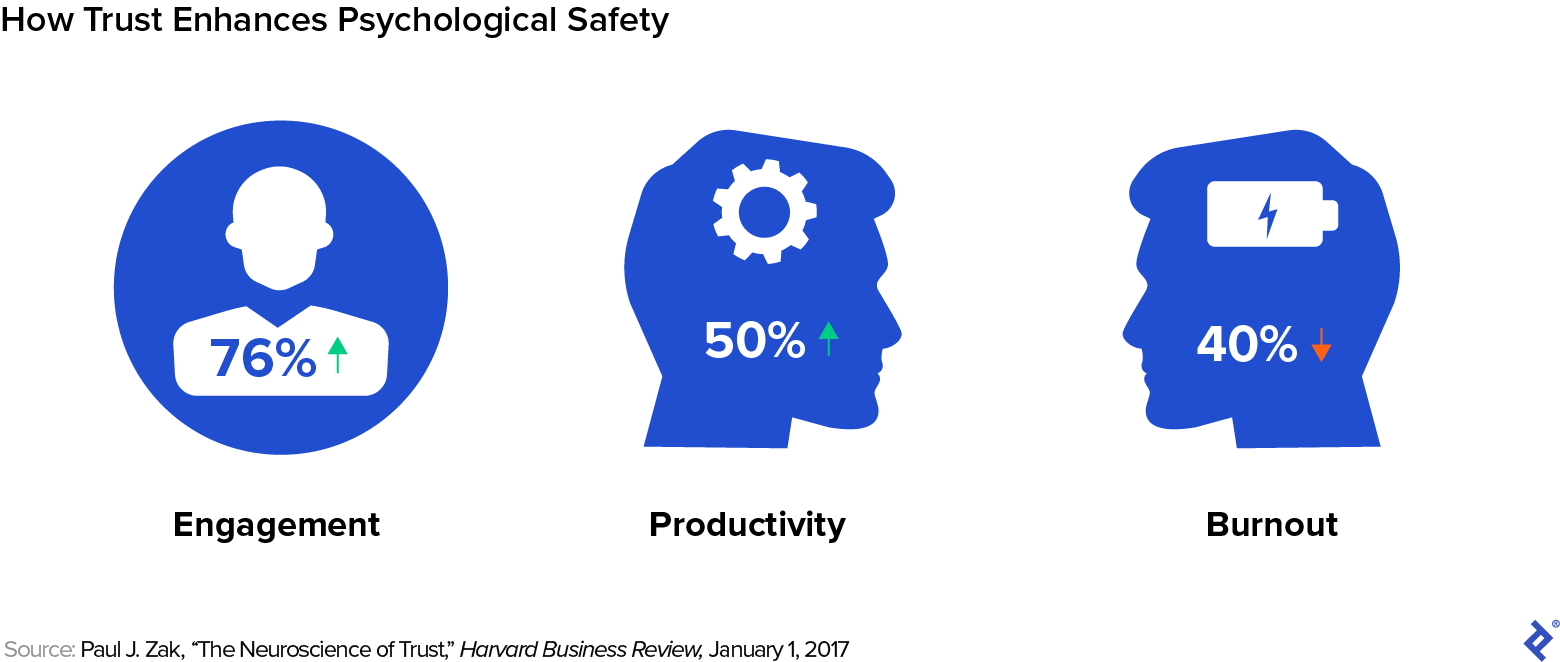Why Design Teams Need Psychological Safety
What is psychological safety, and why do your designers need it? Digital designer Alejandro Velasco explains how to create a workplace environment that increases creativity, productivity, and talent retention.
What is psychological safety, and why do your designers need it? Digital designer Alejandro Velasco explains how to create a workplace environment that increases creativity, productivity, and talent retention.
Alejandro is a digital product designer specializing in user-centered design, UI/UX, and developing visual and interaction languages. He operated as the senior designer on projects with New Relic, Telefónica, and Personio. Alejandro has a master’s degree in industrial and product design from the Scuola Politecnica di Design in Milan.
Expertise
PREVIOUSLY AT

Psychological safety at work is a shared perception among colleagues that they can propose ideas, voice concerns, pose questions, and acknowledge mistakes without fear of negative repercussions. Google’s Project Aristotle found that psychological safety was the most important determinant of team success, far outweighing factors like seniority and individual performance. Workers at organizations that promote trust, a component of psychological safety, enjoy notable advantages compared to their counterparts at low-trust companies, according to research by neuroeconomics researcher Paul Zak. For instance, employees at high-trust organizations report being 76% more engaged, 50% more productive, and 40% less burned out than those at low-trust companies.
As employees increasingly seek mental health support from employers, psychological safety has become a pressing issue for many teams and disciplines, including design. And while designers are experts at empathizing with users, it doesn’t always follow that designers create empathetic environments for themselves.
In my experience as a design manager and consultant, I’ve discovered that design teams that struggle with trust and openness tend to experience high turnover and lack creativity and confidence. I’ve also witnessed how designers in psychologically safe environments are emboldened to experiment, collaborate, and develop innovative and often unexpected solutions. In this article, I share how companies can foster psychological safety in the workplace and provide tips and tools to help design teams feel connected and engaged.
How to Build Psychological Safety Into the Design Process
Timothy R. Clark, founder and CEO of LeaderFactor—a consultancy that facilitates cultural change at organizations—categorizes psychological safety into four distinct steps: inclusion safety, learner safety, contributor safety, and challenger safety. To make these stages relevant to design, I’ll map them to the four stages of the British Design Council’s Double Diamond design process: Discover, Define, Develop, and Deliver.

Discover and Include
The Double Diamond’s Discover phase is when designers collect input from stakeholders, conduct user research, and outline project goals. During this stage, it’s essential to promote inclusion safety, the psychological safety stage that ensures team members feel valued, included, and aware of relevant information and processes.
This stage provides an opportunity to learn the needs of stakeholders not usually involved in the design process, such as salespeople and customer support representatives. This phase also involves sharing information such as product roadmaps and research findings to encourage collaboration and unite stakeholders around a shared objective. In addition to promoting team unity, collaborating with cross-functional teams shows designers the broader implications of their work on the organization’s goals.
Define and Learn
In the Define phase, teams remove unnecessary information and ideas from the design process to better define the design problem. Define is a time when designers articulate hypotheses, exchange opinions, and challenge assumptions, so it’s essential to protect learner safety and promote an educational atmosphere where team members can ask clarifying questions. For instance, the 5 Whys is a Define exercise that involves asking “why” five times to determine a problem’s root cause and find solutions. Another option well suited to Define is affinity diagramming, a technique for organizing an extensive collection of facts, statistics, and ideas into thematic clusters. The 5 Whys and affinity diagrams encourage collaboration, yield nuanced insights that spark inquiry, and prod designers to rethink preconceived notions about the design problem.

Develop and Contribute
The Develop phase is when the design team selects concepts (generated during the Define phase) that seem likely to succeed and builds working prototypes to identify problems and minimize the risk of launching a faulty product. It’s a highly active stage: Plans are scrutinized, prototypes are tested, and the competing interests of cross-functional teams collide. Develop is also a vulnerable time, so prioritize contributor safety to help employees feel safe even as they propose ideas that could falter. For instance, when conducting activities like crit sessions and design pingpong, ensure that each concept gets a fair and thorough review by establishing clear ground rules, including:
- Empowering the presenter to show work in any stage of design development.
- Allowing the presenter to share without interruption.
- Asking for comments to be kept inquisitive rather than judgmental (e.g., “I’m curious why you chose Design A over Design B” instead of “You should’ve chosen Design B”).
- Encouraging team members to avoid taking feedback personally.
Deliver and Challenge
Deliver may be the most sensitive phase of the process. As the product receives feedback, often from stakeholders outside of design, it’s crucial to retain team members’ integrity and sense of inclusion. To do so, ensure challenger safety, and allow design team members to continue critiquing the product and proposing new concepts. For example, if an executive asks for a product feature to be revised, designers should feel comfortable drafting a version that may deviate from the executive’s feedback; whether or not the designer’s version is approved, team members will feel valued knowing that their ideas receive consideration.
Develop Psychological Safety: A Team Effort
For psychological safety practices to be effective, design leads must set the example. Research suggests that a humble leadership style leads to an increase in team creativity. Humble leaders naturally align with psychologically safe practices such as acknowledging mistakes, supporting risks, encouraging feedback, and cultivating a safe space in which to voice concerns. Here are some ways team leaders can exhibit humble leadership and establish psychological safety:
Check in with your team’s emotions. Start meetings with “How is everyone feeling?”
Be authentic. Tell your team about your concerns, doubts, and questions rather than pretending to have all the answers.
Search for the positive. Find ways to recognize the strengths of a team member’s work, especially when providing critical feedback.
Respond immediately. Address issues that arise as soon as you can so that your team knows you are listening.
Have fun. Even though it’s work, it doesn’t always have to be serious. Organize and attend social events to get to know your team better.
While design team leads are responsible for initiating an open and inclusive environment, psychological safety can only take root if team members also apply it to learning behaviors. In professional settings, learning behaviors include activities such as asking for feedback, exchanging information, seeking help, discussing errors, and testing new ideas. One way to ensure such activities promote psychological safety is to have team members create expectations and processes for participating in learning behaviors. For instance, using a turn-taking technique such as the round robin method during team critiques can allow more reserved team members to voice valuable insights that they might not feel comfortable sharing otherwise.
Encourage Psychological Safety
If your company or design team is starting its psychological safety journey, consider running an anonymous assessment to gauge how your team members are doing. Alla Weinberg, a designer and corporate culture consultant, created a psychological safety survey that includes questions such as:
- How comfortable do you feel sharing ideas in front of your colleagues?
- How often do you talk about emotions at work?
- How often do you productively talk about and learn from mistakes at work?
Psychological safety isn’t a new concept in the workplace. But talent shortages and a culture shift emphasizing employee well-being have magnified the need for organizations to cultivate environments in which employees are comfortable testing ideas, expressing concerns, and acknowledging mistakes. By adopting psychological safety practices, teams can better attract and retain talented designers. In turn, designers who feel heard and respected will be more empowered to identify user challenges, experiment with ideas, and design compelling solutions, ultimately benefiting companies and their customers.
Understanding the basics
What is psychological safety?
Psychological safety is a workplace environment that encourages team members to fully express themselves. Psychological safety in the workplace enables workers to take creative risks, share suggestions, raise concerns, and provide honest critiques without fear of negative consequences.
What does a lack of psychological safety look like?
When there is a lack of psychological safety in the workplace, workers fear retribution for sharing honest feedback and challenging ideas. This can result in employees losing confidence, withholding creativity, burning out, feeling dissatisfied, and even leaving their jobs.
Why is psychological safety important?
Psychological safety is important because it encourages trust between colleagues and fosters a sense of community that enhances creativity, strengthens collaboration, and improves overall team output.
Alejandro Velasco
Madrid, Spain
Member since March 30, 2017
About the author
Alejandro is a digital product designer specializing in user-centered design, UI/UX, and developing visual and interaction languages. He operated as the senior designer on projects with New Relic, Telefónica, and Personio. Alejandro has a master’s degree in industrial and product design from the Scuola Politecnica di Design in Milan.
Expertise
PREVIOUSLY AT



